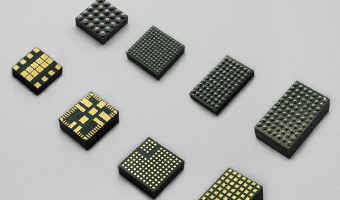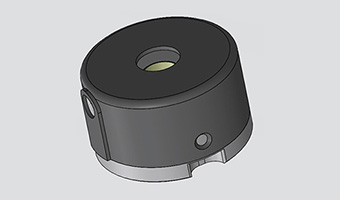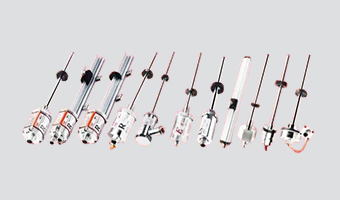Understanding Motor Encoder Types: A Guide for Industrial Automation
Apr 18,2025
By:Epoch
Motor encoders are vital components in modern automation, providing precise feedback for position, speed, and direction in motor-driven systems. Selecting the right motor encoder type is essential for achieving optimal performance, reliability, and control in applications ranging from robotics and CNC machines to packaging lines and medical devices. This article explores the most common motor encoder types, their working principles, and their ideal use cases.
1. Incremental Encoders
Incremental encoders generate pulses as the motor shaft rotates, with each pulse representing a fixed angular movement. The control system counts these pulses to determine speed, direction, and relative position. However, incremental encoders do not retain position information after power loss—requiring a reference or homing procedure at startup.
Key Features:
· Outputs A/B (and often Z/index) pulse signals
· Resolution typically 1,000–5,000 CPR (counts per revolution).
· High frequency response (up to 500 kHz) and speeds up to 6,000 rpm.
· Cost-effective and simple design
Best For:
Speed monitoring, relative positioning, conveyor systems, and general industrial automation where absolute position retention is not required.
2. Absolute Encoders
Absolute encoders provide a unique digital code for every shaft position, ensuring the exact position is always known—even after power loss or system restart. They are available in single-turn (position within one revolution) and multi-turn (position across multiple revolutions) versions.
Key Features:
· Unique position value for each shaft angle
· High resolution: 17–23 bits (131,072–8,388,608 positions per revolution); multi-turn up to 65,536 turns.
· Retains position data after power loss—no homing required
· Available with robust interfaces (RS485, SSI, BiSS, etc.)
Best For:
Safety-critical systems, robotics, CNC machines, and applications demanding precise, always-available position data.
3. Linear Encoders
Linear encoders measure straight-line (linear) displacement rather than rotation. They are used in applications like automated sorting, laser cutting, and high-precision X-Y tables.
Key Features:
· Tracks linear movement with high accuracy
· Available in both incremental and absolute versions.
Best For:
Linear actuators, CNC tables, and automated inspection systems where precise linear feedback is required.
4. Rotary Encoders
Rotary encoders measure the angular position or speed of a rotating shaft. Both incremental and absolute types are available, and they are commonly integrated directly onto motor shafts.
Key Features:
· Converts shaft rotation into electrical signals
· Supports high-speed and high-precision applications.
Best For:
Servo motors, robotics, and any application requiring rotational feedback.
5. Magnetic, Optical, and Capacitive Encoders
Encoders are also classified by their sensing technology:
· Optical Encoders:
Use light patterns for high precision; sensitive to dust and contamination.
· Magnetic Encoders:
Use magnetic fields; robust in harsh environments, suitable for high-vibration or dirty conditions.
· Capacitive Encoders:
Use changes in capacitance; fast and cost-effective, but generally less precise than optical types.
Comparison Table: Absolute vs. Incremental Encoders
Feature | Absolute Encoder | Incremental Encoder |
Position Feedback | Unique code for each position (absolute) | Pulses for relative movement (incremental) |
Power Loss Recovery | Retains position, no homing needed | Requires homing after power loss |
Resolution | High (17–23 bits, multi-turn possible) | Moderate (1,000–5,000 CPR) |
Cost | Higher | Lower |
Complexity | More complex | Simpler |
Typical Applications | Precision, safety, robotics, CNC | Speed, distance, conveyor, general automation |
How to Choose the Right Motor Encoder Type
· Need for absolute position after power loss?
Choose an absolute encoder.
· Is cost or simplicity the priority?
Choose an incremental encoder.
· Linear vs. rotary motion?
Use linear encoders for straight-line movement, rotary encoders for shaft rotation.
· Harsh environment?
Consider magnetic encoders for better durability.
Understanding the different motor encoder types—incremental, absolute, linear, rotary, optical, magnetic, and capacitive—helps ensure you select the best solution for your automation needs. Each type offers unique advantages for specific applications, from basic speed monitoring to high-precision, safety-critical motion control.
> EPOCH ELECTRONIC specializes in supplying a full range of motor encoders, including absolute and incremental types, tailored to your servo motor and automation requirements. Contact us for expert guidance and reliable encoder solutions.


























